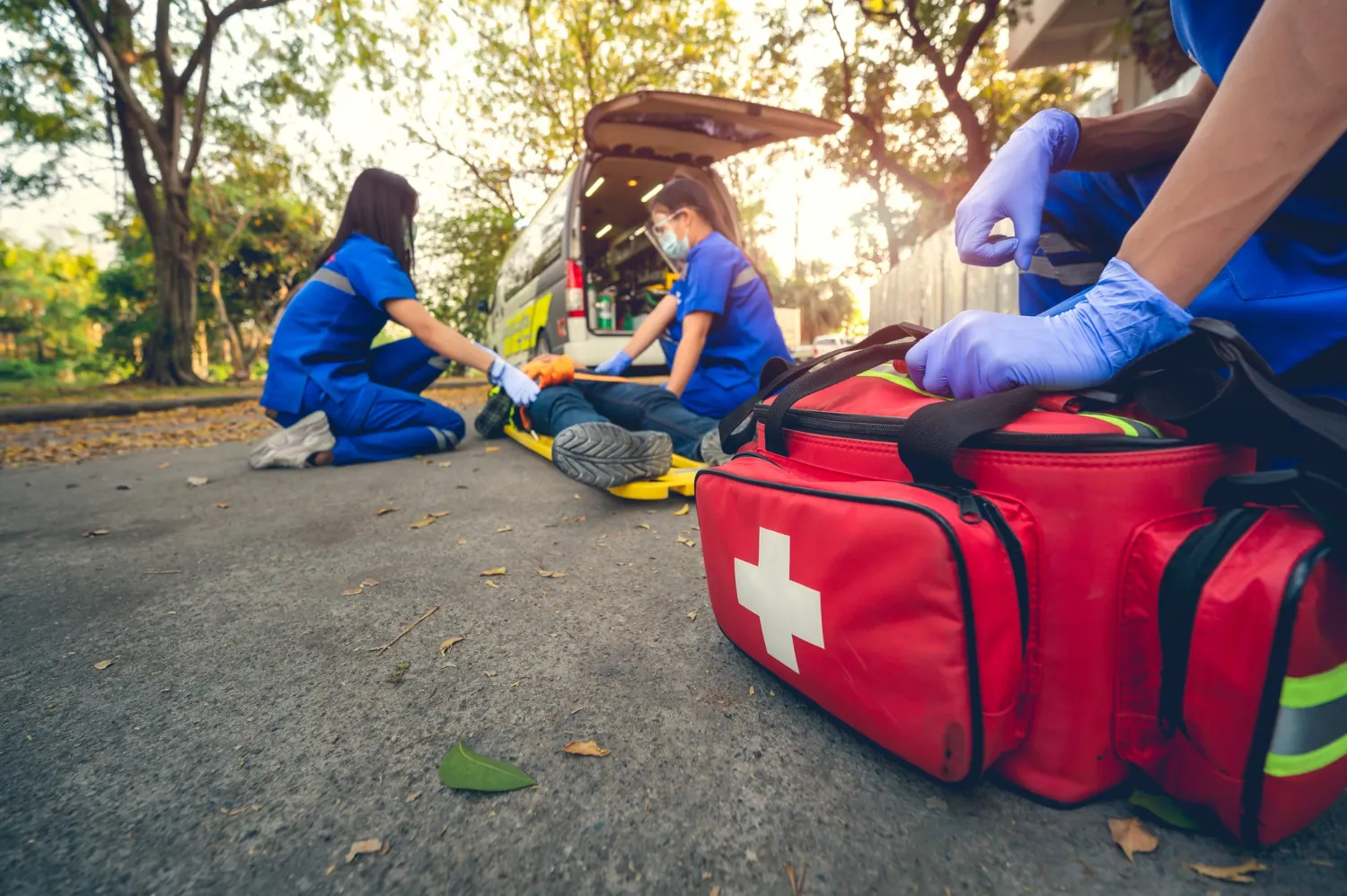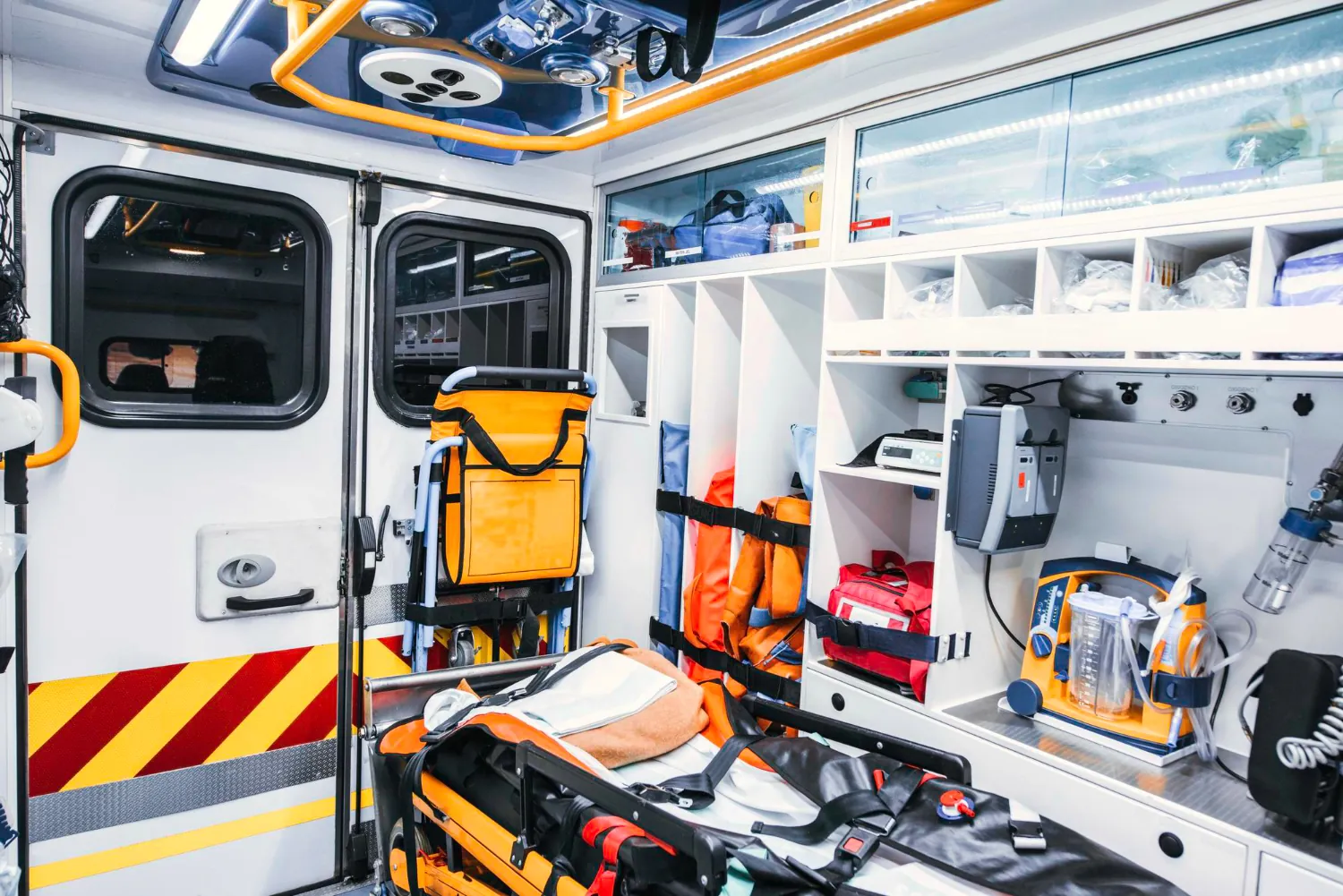Narcotic Tracking Under Pressure: 4 Tips for Maintaining Calm as a Paramedic

When the pressure is on in an emergency, you rely on your training and muscle memory to guide you through the proper steps. Controlled substance tracking, maintaining inventory, and other critical but less-timely steps can fall by the wayside.
But once things calm down, it's important that you know the right steps for narcotic logging, reporting, and setting everything back up for the next emergency. Here's the secret to maintaining a cool head under pressure as a first responder.
Dealing with the Intensity of Emergency Response
In emergency response, pressure is the name of the game. We've all dealt with intense situations. After all, EMS is often facing life and death situations. You're driving a fast (overweighted) vehicle; you're often walking into an unknown situation, and no matter how much training and experience you've got, there are going to be elements outside your control. A recipe for a stressful environment.
While your training and experience can help keep a cool head, it's still important to recognize that when adrenaline takes over, it can be harder to maintain a calm demeanor. When walking into stressful situations, it requires a proper mindset and a strong mentality-you're fighting your human instinct to fall back.
It's one of those things that most in EMS don't like to admit, but we all occasionally have a "freeze" moment. It's where your mind might feel a little blank; you might have a moment where you aren't sure what to do next. It's like your brain, and sometimes your body just locks up.
When this happens, it's always best to take a quick (deep) breath and focus on the basics. Is the person breathing? Are they bleeding? Do they have a pulse? Are they ready to be loaded into the ambulance, or should they be treated on scene? What other resources do you need? These are all questions that you get better and better at through experience and ongoing training, which translates to a calmer demeanor. After all, the more often you see a certain situation, the more prepared you will be the next time.
Once the chaos has subsided, you might look back and wonder, "What just happened?" That's when it's time to collect your thoughts, organize yourself, track any medications and narcotics used, assess inventory, and prepare for the next steps. Fortunately, having the right tools can help you and your team put things back in place.
Here's how to help your team keep cool under pressure (and get back on track when the dust settles).
1. Training is Crucial
People with stage fright are often told that practice is the key to calming jitters. While much more critical than giving a speech, emergency response can benefit significantly from following the same advice.
When you're responding to a situation under pressure, you need to rely on that muscle memory. It's almost like a dance-perform your assessment, identify which treatment protocol to follow, initiate treatment, load the patient, and so on. The more you train and walk through the scenarios, the more automatic your response becomes. During moments of crisis, we revert to muscle memory, so the more prepared your brain is, the easier time you'll have on an emergency.
Now, of course, you must always expect the unexpected in EMS. Anything could happen, and sometimes it's hard to predict what you will face in a given shift. But if you've practiced and studied all the knowledge and skills of a given response policy, it can help quell any fear or moments where your mind goes blank.
2. Just Take the Next Step
When you walk into a high-pressure situation, take a deep breath and focus on only the next step. What is the next thing you need to do in the situation to get the patient the best treatment possible? Ultimately, the goal is to get a patient in the ambulance and keep them alive and to definitive care. Focus on the very next thing you have to do.
Sometimes paralysis can strike even experienced EMS professionals-and at unexpected times. If this happens, trust your training and focus on making the next move. Once you've moved through the situation, take a moment to regroup and consider if there's something you need to work on or firm up going forward. After all, our EMS protocols are based on best practices and policies well laid out in a step-by-step algorithm. Knowing these algorithms inside and out will guide you through patient care.
3. Communicate with Your Team
Communication is crucial, especially in emergency response. To remain calm in high-pressure situations, a crew should trust each other and work together as a team. When you trust your colleagues, you know you're in it together. If you have questions or need a hand, they're there to help.
Train on communication in low-pressure (non-emergency) environments. We might think that team-building activities sound a little silly or unnecessary, but the truth is when you're relying on someone to have your back in an emergency, those bonds are critical. This goes for training with your partnering agencies. You need to train with other fire departments, ambulance companies, and law enforcement. This helps build teamwork across agencies and creates familiarity between personnel with different roles. It's always best to be on a first-name basis with those you're going into battle with!
Similarly, supervisors and staff should be in constant communication as well. If there's an area where team members don't feel confident, they should feel completely comfortable bringing it to the administration's attention. There's no shame in asking questions or learning something new. Additionally, it's important for supervisors to train with their crews. During large emergency incidents when supervisors might be called to a scene, there needs to be that same level of teamwork.
4. Take Care During Down Time
When you start a shift, what are you bringing along with you? Do stressors from home come to work? Are you taking care of yourself during your off-hours so you can be "on" when you need to be? Self-care is a buzzword these days, but it really means more than indulging in a long shower or eating some cookies after a shift.
Use your off time to do the things that bring you satisfaction, happiness, and a sense of calm. When you can tame the chaos in your daily life, you'll also be more relaxed under pressure. The basics of self-care include making sure you're getting enough sleep, eating healthy foods, exercising your body, and doing things that protect and strengthen your mental health.
When you work a demanding job like emergency response, time with friends and family is vital for keeping you nourished and refreshed. Focus on bringing activities into your off-hours that bring you joy and a sense of connection with others.
LogRx Helps Paramedics Stay Cool Under Pressure
You know it's critical to follow protocols during an emergency. It's also essential that you organize yourself after, taking time to track narcotics, log inventory, and replenish supplies. Look at it as setting yourself up for success for your next call.
If narcotic logging compliance falls by the wayside when the rush is on, LogRx can help. Our tool makes paramedic narcotic tracking easy-even on the go in the busiest times.
Paper prescription drug trackers fail because they're inconvenient and easy to forget. Suddenly, you're trying to piece together what happened at the end of a shift (or at the end of several shifts), and it all seems like a blur. LogRx succeeds where paper tracking falls short by offering you a convenient way to track right from your phone. You can view inventory levels and keep track of every narcotic in real-time.
Paramedic teams love LogRx because it was designed by EMS professionals to work in the field. It's reliable, practical, and easy. There's no extra equipment to keep track of. You don't need special scanners or extra hardware to lug around. Simply use your camera to scan labels and track them. It's that easy.
Even if you move out of range, LogRx lets log activity offline and upload the information once you return to service. It's an excellent solution for air transport, search-and-rescue, and wildlife professionals who might work out of service areas or, in some cases, high-security or classified situations where cell service and GPS tracking needs to be turned off.
For administration, LogRx is like having another team member in your office. You can easily run reports and track the dispensing activities of your team from an easy-to-use admin portal. Staying compliant with reporting guidelines is easy. LogRx is accurate and simple; it prevents drug diversion as well as unintended errors. There's no hassle or headache when you need to file reports.
If you're looking for an easy, user-friendly, affordable narcotics-tracking solution, support your team with LogRx. It's an ideal tracking solution for any medical professional who handles and tracks controlled substances. When the pressure is on, LogRx can help!
Categories
Recent Posts
- LogRx and Knox: How LogRx Integrates with EMS Medication Lockboxes
- Connecting Community and EMS: 7 EMS Community Outreach Ideas
- Projecting Professionalism: Why EMS Uniforms Matter
- EMT Off-Duty Response: What You Should Carry Everywhere
- Basic EMT Trauma Assessment Scenarios: Gearing Up for Certification


















.webp?t=1766386393821)































